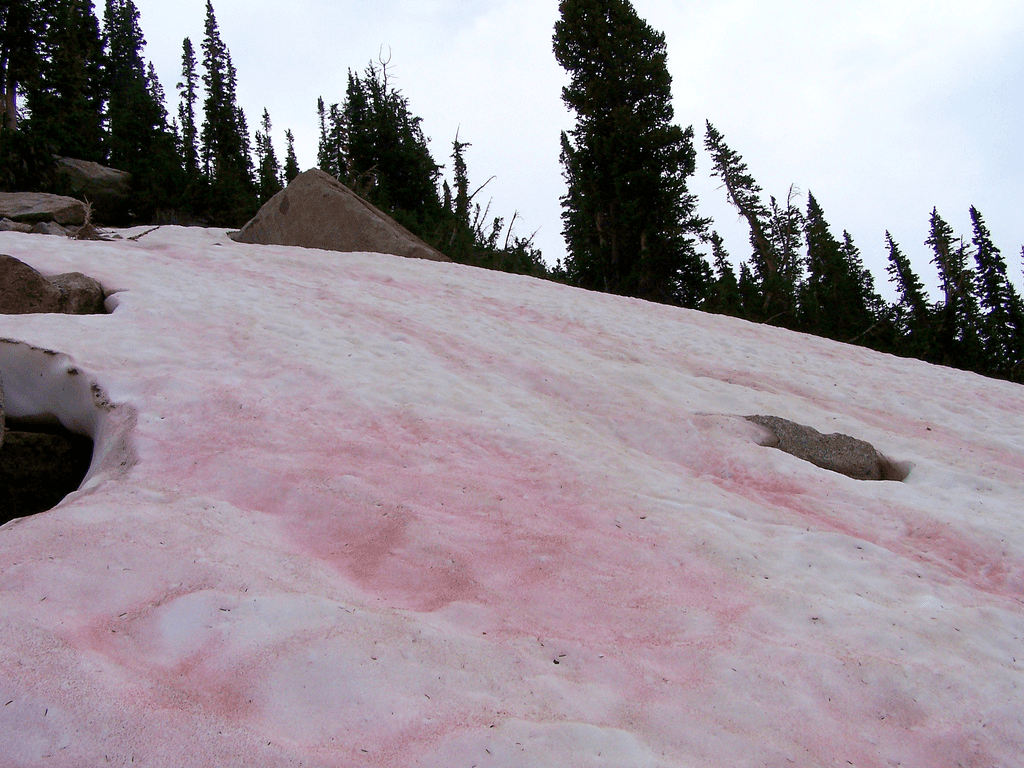
The image is pretty, right? Although it may seem so, it is not retouched with PhotoShop or any image editing program, but is completely original. Snow is not always white, it can also be red, although for Americans it acquires the typical color of watermelon, which is why it is known as watermelon snow.
But What causes it to have this color?

Apparently there are microscopic green algae whose scientific name is Chlamydomonas nivalis which have a reddish pigment in its gelatinous envelope that protects them from ultraviolet radiation from the polar regions. With the arrival of spring they expand very quickly, giving the white landscape a very beautiful pink or red hue.
To be able to see the watermelon snow you can go to any polar region, but it is especially recommended to go to the Sierra Nevada of California (U.S). Every year its peaks are stained in this color that draws so much attention.
Watermelon snow and global warming

Although it leaves the landscapes impressive, the sad reality is that as the planet warms, algae reproduce more easily. In doing so, they prevent white snow from reflecting sunlight, accelerating a 13% the process of ice melting, as revealed by a study carried out by a group of scientists from the German Research Center for Geosciences, in Potsdam, and the University of Leeds (United Kingdom), and published in the scientific journal Nature.
Thus, this curious phenomenon becomes one more sign of global warming, in such a way that it is essential to consider it in order to understand the changes that are taking place on the planet in all its complexity.
You can read the full study here (In English).